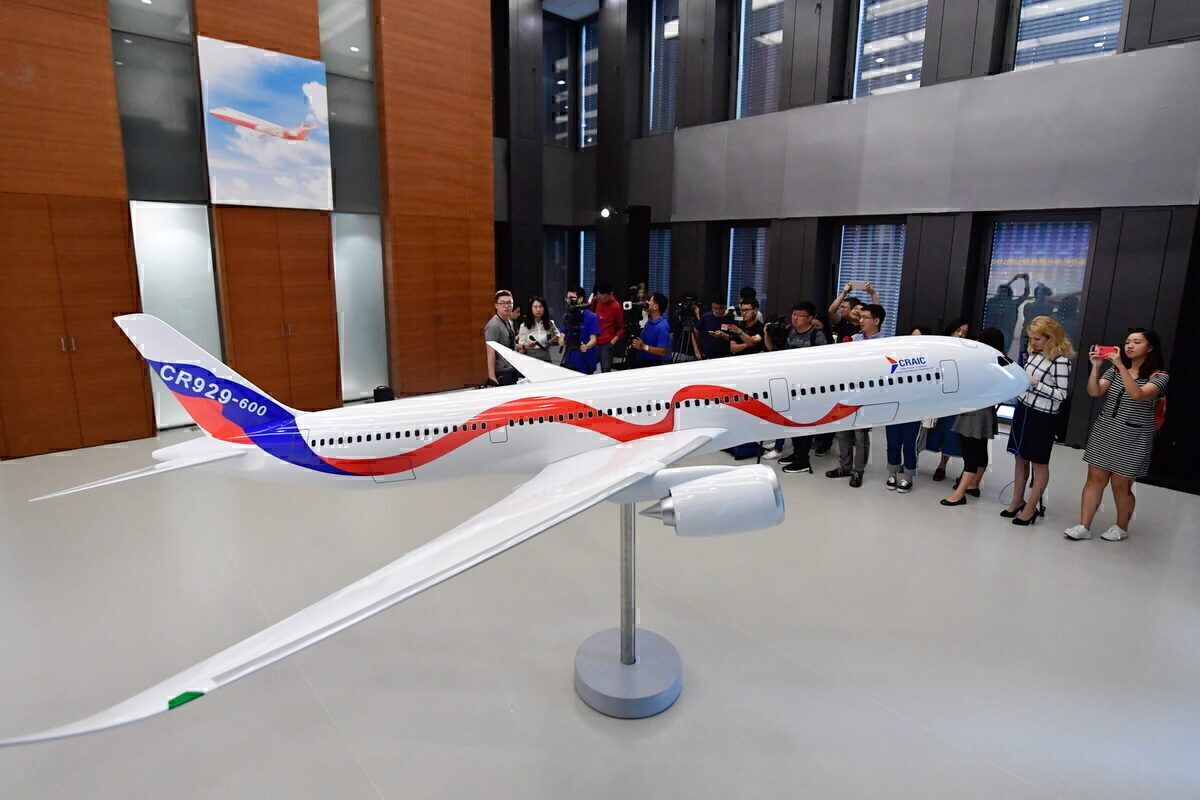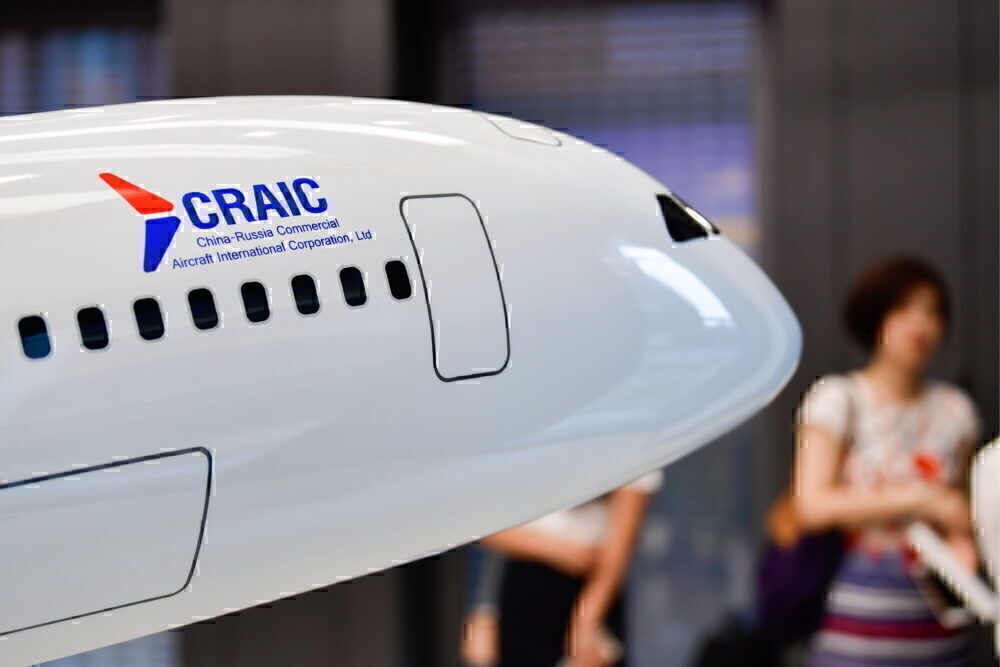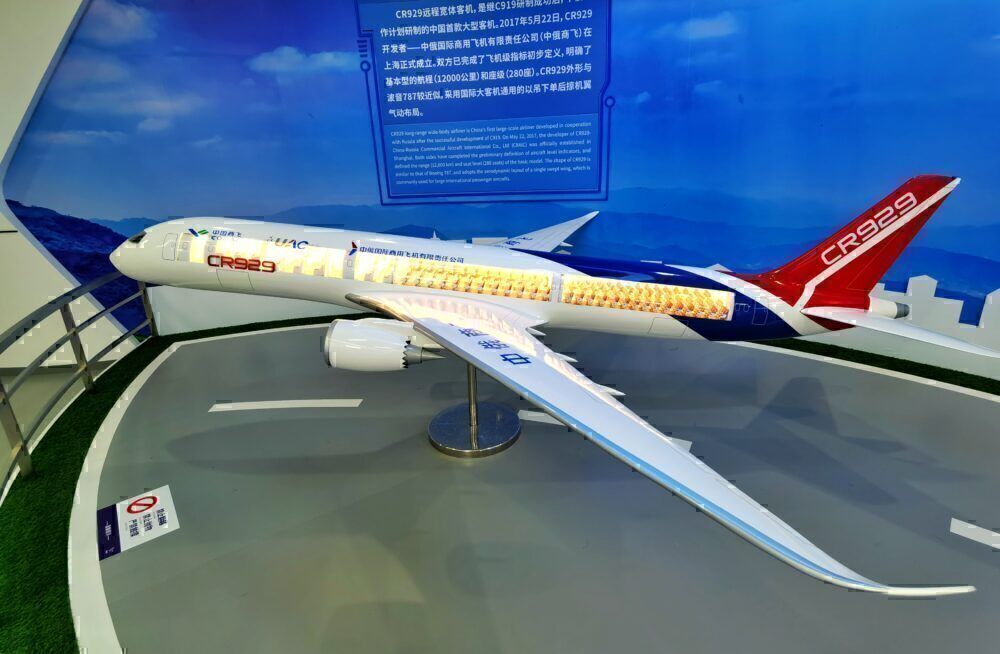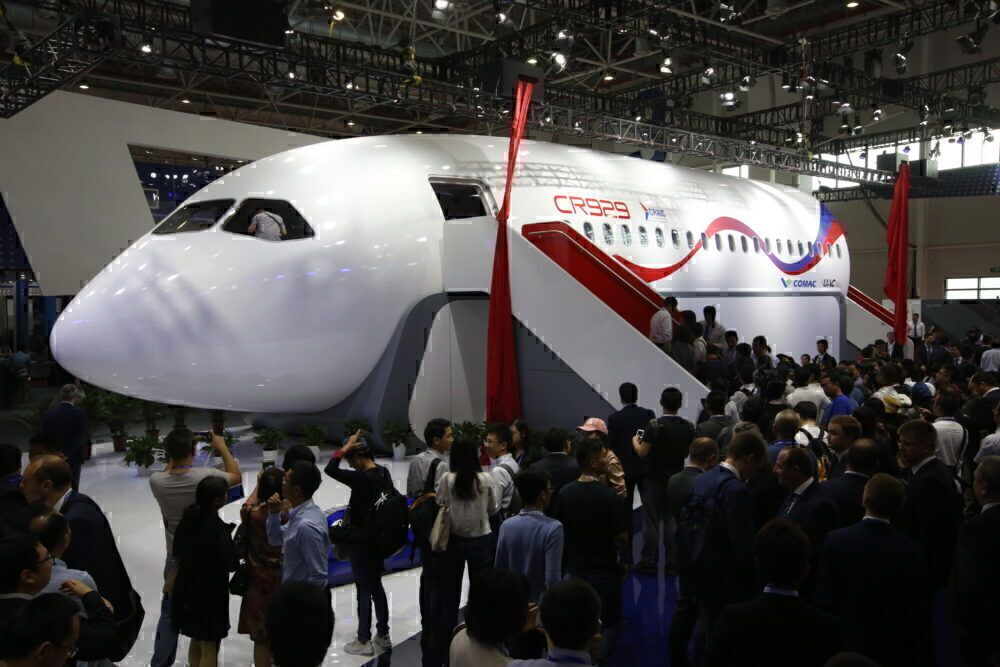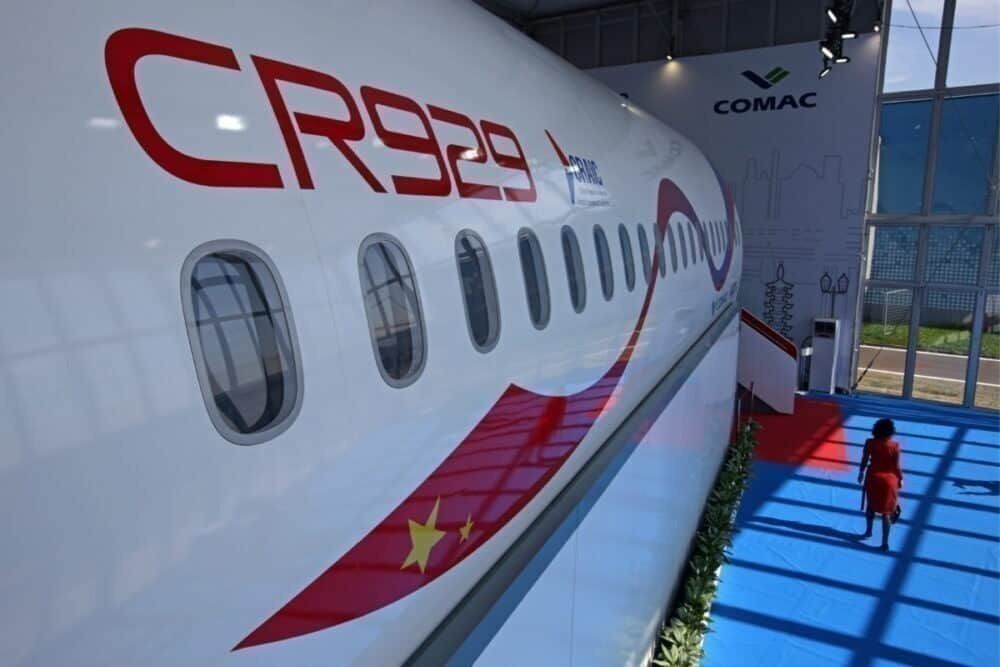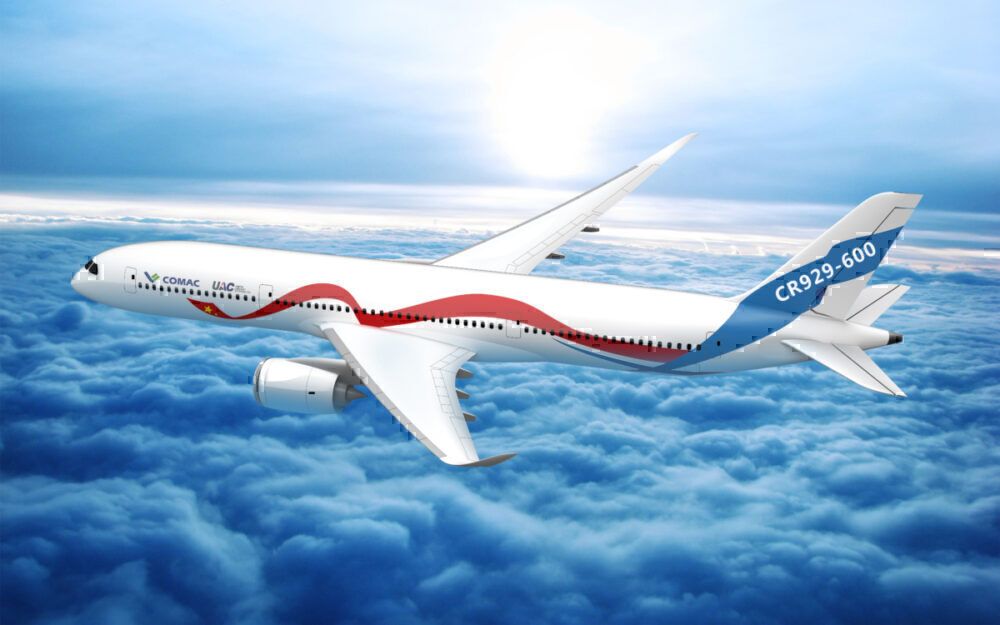When China and Russia got together to create a new widebody for the world, the world didn’t make much of the prospects. Boeing and Airbus have dominated the widebody market for several decades, and a questionable plane from a new manufacturer would find it hard to break in. Nevertheless, progress with the CR929 is ongoing, so could it really be competition for the Dreamliner?
China’s bid to tackle Boeing and Airbus
The aviation activity in China has been hotting up in recent months. Weeks ago, the COMAC-made C919 narrowbody showed itself to the masses, performing its first public flying display at an airshow in Shanghai. Last summer, the three biggest Chinese airlines all took delivery of COMAC’s regional jet, the ARJ21, all at the same time.
While neither of these aircraft are a particular threat to Boeing or Airbus, they’ve gained some traction in Asia. Just last month, China Express placed a 100-plane order for a mix of the two types, signaling confidence in the abilities of COMAC to deliver. However, COMAC is working on something somewhat larger as well.
The CR929 is a joint project between China and Russia to build a widebody plane capable of competing with the Boeing 787. It’s being developed by a consortium calling themselves the China-Russia Commercial Aircraft International Corporation (CRAIC), hence the CR prefix.
When it’s eventually certified, the CR929 hopes to take on the efficiency of the Boeing Dreamliner. It’s also pretty similar in specifications to Airbus’ A330neo. The final product remains to be proven, but promises all the comfort and efficiency advantages of a modern widebody at a typically Chinese cut-price entry point.
What can we expect from the CR929?
The CR929 is an interesting aircraft. To the untrained eye, it looks as if the Boeing 787 and A330neo had a baby. Has COMAC found a way to take the best of both worlds and create a superior version?
The CR929 compares to these two other aircraft as follows:
- CR929: 261-291 passengers in 3-class seating with a range of 12,000 km
- Boeing 787-9: Around 290 passengers in a two-class configuration with a range of 14,140 km
- Airbus A330neo: up to 287 seats in three classes with a range of 13,334 km
As well as the initial variant of the CRAIC aircraft, there are plans in place for both a stretch and a shrink of the fuselage. The smaller CR929 would have a capacity of around 250 passengers, but its range would increase to some 14,000 km. The larger version could seat up to 320 in a three-class configuration, with a range sacrifice down to 10,000 km.
Does this pose real competition?
While the CR929 aims to take on Boeing and Airbus, it doesn’t seem to have cracked the passenger/range trade-off very well. The range is significantly less than the Dreamliner for fewer passengers onboard. This could be overlooked at the right price point and for the right mission, but that’s not the only challenge CRAIC will have to overcome.
One of the biggest issues for operators of planes that are not from Boeing and Airbus is the lack of a sturdy supply chain for parts. This has been the downfall of the Sukhoi Superjet for many operators, with spares difficult and time-consuming to get hold of. Conversely, the Dreamliner has a network of MRO facilities and sources for spare parts all over the world.
For now, the CR929 is not much more than a paper airplane. It may be that, when it arrives, it proves to be more efficient than expected or that a range improvement gives it an edge. However, this doesn’t overcome the issue of MRO provision, which will likely see it struggle to gain traction outside of China and Russia.
The impact of COVID on the CR929’s development
As with all aspects of aviation, 2020 has had a disruptive effect on the development of the CR929. Speaking at a recent Royal Aeronautical Society webinar, Prof Dennis Scott, Assistant Chief Designer at COMAC, explained that, although things have certainly seen an impact, this was perhaps lessened due to the self-reliance of China’s aviation industry. He said,
“China will be impacted less due to its reduced reliance on Airbus, Boeing and the engine companies. China does not form the same level of their respective supply chains, compared to other regions of the world.”
However, he did note that all five aircraft projects in China have seen some delays. That ranges from the AG600 amphibious aircraft to the ARJ21 and, of course, the CR929. In particular, the transnational development of the project has been a tough cookie to crack, as ongoing travel restrictions have made it difficult for the Russian and Chinese teams to meet up.
In light of the pandemic, FlightGlobal reports that Russia has proposed some hefty budget cuts to the project as part of a wider review of aviation-related spending. While the outcome is yet to be firmed up, it’s likely that the project will see a cut in the region of 10% from the Russian side.
Is the partnership improving?
The relationship between China and Russia on this project has been a rocky road. While both were keen to develop a plane to compete with Boeing and Airbus, neither had the technology or resources to do it alone. China didn’t have the experience or expertise, while Russia lacked a viable market to sell the plane to.
Working together has proven to be challenging for both parties. Earlier this year, the entire project was thrown into jeopardy as COMAC pushed to be the sole reseller to the Chinese marketplace. Clearly, Russia sees China’s blossoming aviation marketplace as a hotbed for future sales, much more lucrative than the fairly narrow opportunities that exist in their home country.
Nevertheless, it seems the events of 2020 have served to bring the two perhaps a little closer together. Just this week, the Moscow Aviation Institute has revealed that it is collaborating with COMAC to improve the safety of composite wing structures. While not a big deal in the great scheme of things, it signals a level of knowledge sharing that has previously passed the project by.
That’s not to say that a full-on technology transfer has happened between the countries – heavens no. But it does mean that Russia is finally opening up to sharing some knowledge with its Chinese partners, something it has historically been unwilling to do. In the release on the subject, MAI said,
The project is important for our Chinese colleagues, as they yet have no experience of independent calculations of this kind. The result can be used in the development of the CR929 wing and in the modernization of the C919 in case of implementation of a wing made of composite materials.
It’s certainly a step in the right direction and could see progress accelerating on the CR929 in the coming years. Whether that will guarantee it a 2025 launch, or even any success against Boeing and Airbus, remains to be seen.

